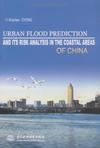中国沿海地区城市洪水预测与风险分析
出版时间:2009-6 出版社:水利水电出版社 作者:程晓陶 页数:267 字数:341000
前言
This dissertation is an outcome spanning the joint of thecenturies from 1999 to 2002. It is an attempt to studythe new features of flood disasters during the speededup period of urbanization in the coastal areas of China,and to find out the intrinsic relationship that flood riskvaries with the socio-economic development, and theideas and modes of flood risk management that maymeet the demands of flood prevention. The new meansof numerical simulation techniques for floodriskprediction and analysis in urbanized areas are alsodiscussed with case studies of three coastal cities,Shenzhen, Guangzhou and Tianjin.In the past century, development and utilization of thelarge scale structural engineering measures andinformation techniques have greatly enhanced the floodcontrol capacities of human being, which satisfied thefundamental requirements of development in floodplainsduring the process of population explosion, increasedpressure in food supplies, and rapid urbanization.
内容概要
本书以中国沿海地区为对象,系统介绍了沿海地区的各类洪水的时空分布特性与防洪体系的发展,分析了城市化对防洪形势演变的影响,综合比较了国内外在快速城市化阶段治水方略调整的措施,探讨了洪水风险管理的新理念,以及现代防洪体系逐步完善的内在规律与发展趋向。详细论述了城市化地区洪水风险分析的各种方法与洪水数值模拟的新技术,以深圳、广州、天津三个沿海地区的城市为实例,介绍了城市洪涝仿真系统的发展进程与应用成果。全书用英文撰写,可供防洪减灾科技与管理人员、大专院校相关专业师生参考,也有利于国际间的交流
书籍目录
PrefaceAc knowl edgmentsChapter 1 Introduction 1.1 Background 1.2 Objectives of Study 1.3 Scope and Methods of Study ReferencesChapter 2 Urbanization Process and Changes of Flood Control Situations in the Coastal Regions of China 2.1 Survey of the Coastal Regions in China 2.2 Flood-related Geographical Features of the Coastal Regions 2.3 Flood Risk Changes along with the Urbanization2.4 Development of Urban Flood Control Systems and the Present Issues in the Coastal Regions of China 2.5 Conclusions ReferencesChapter 3 Flood Risk Management: Theory and Practice 3.1 Introduction 3.2 Flood, Flood Hazard and Flood Risks 3.3 Trends of Strategy Adjustments: From Flood Control to Flood Management 3.4 Flood Prevention and Security System: Fundamental Conception 3.5 Conclusions ReferencesChapter 4 Development of Urban Flood Simulation Techniques 4.1 Introduction 4.2 Methodologies of Flood Risk Analysis 4.3 The Urban Flood Risk Analysis System 4.4 Conclusions ReferencesChapter 5 Flood Risk Research for the City of Shenzhenm Case Study I 5.1 Introduction 5.2 Improvements and Examination of the Shenzhen UFSM 5.3 Application of UFSM to the Assessment of Flood Control Planning for Shenzhen 5.4 Preliminary Design of UFSM Using in Flood Control Decision Support System (FCDSS) 5.5 Conclusions References Chapter 6 Evaluation of Flood Risk for the City of Guangzhou-Case Study 6.1 Introduction 6.2 Research on the UFSM Developingfor Guangzhou 6.3 Establishment and Verification of the GuangzhouUFSM 6.4 Flood Risk Assessment for Guangzhou City 6.5 Application of the Model to the Flood Risk Management System 6.6 Conclusions ReferencesChapter 7 The Real-time UFSM for the City of Tianjiir--Case Study III 7.1 Introduction 7.2 Improvement of the Urban Flood Simulation Model 7.3 On the Real-time Forecasting Mode of UFSM 7.4 Verification of the Tianjin UFSM 7.5 Conclusions ReferencesChapter 8 Conclusions 8.1 Progress in this Dissertation 8.2 Prospect of the FutureAPPENDIX: Equivalent of Special Names
章节摘录
Numerical model for the simulation of flooding in urban areas willbe an effective method. It will be used to predict the floodbehaviors under the varied conditions of urbanization as well as theflood control systems, offering a scientific basis to realize the urbanflood issues for the future and to make flood risk managementsystems reasonably. In recent years, the author has undertaken floodrisk research projects for some coastal cities, such as Shenzhen,Guangzhou, Shanghai and Tianjin. An Urban flood simulationsystem has been developed and perfected during this process. Themodel combined with the advantages of both Finite Volume Methodand Finite Difference Method has been transformed from regulargrid to non-structural irregular grid. In order to use the model in theurban regions, a simulation method for drainage systems has beenimproved. A set of pre-and post-treatment software serving for themodel has been developed. With the function of imaging displayand operator-computer communication, the results of flooding arevisible on screen, which makes the model to be capable to inquirethe information during the calculation and to deal with the suddenaccidents such as levee break. It has now played an important rolein the fields of flood prediction and forecast, flood risk analysis,flood damage assessment, flood control planning and flood fightingdecision support systems.
图书封面
评论、评分、阅读与下载
